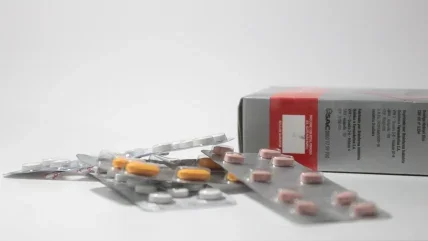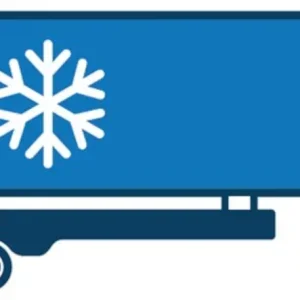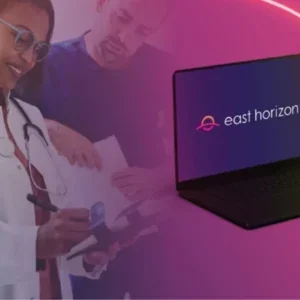
In previous years, the falsified batch of Avastin – a blockbuster cancer drug made by Genentech – would have likely gone undetected. But when a Dutch wholesaler scanned a box full of the drug back in June 2019, an alert system helped sniff out the fake product before it ended up in a patient’s unsuspecting hands.
The incident was significant and this is not just because it protected lives: it marked the first time a batch of falsified medicines was intercepted under the EU’s flagship anti-counterfeiting regulation – the Falsified Medicines Directive (FMD).
The system – one of a number of similar regulations being rolled out around the world – is designed to put a stop to the global counterfeiting scourge that the World Health Organization (WHO) says costs the lives of hundreds of thousands of people every year, mostly in the developing world.
FMD – which came into force last February – requires that every pack of prescription medicine, sold within a EU member state, has two new safety features: an anti-tampering device and a unique identifier that is readable to both humans and machines, and can be checked at the point of dispense and sale before the medicine reaches the patient.
But while serialisation regulations like FMD have shown some initial success – the batch of falsified Avastin drugs a clear case in point – pharmaceutical experts involved in implementing the regulation say it is not enough to fully stamp out the illicit trade.
Step it up
More must be done, the experts say, to ensure different stakeholders and not just drug manufacturers are responsible for getting bad medicine out of the supply chain, while patients at the end of the line must also be empowered to verify the drugs they ultimately use.
“Serialisation is just the first step,” says Guido Holzem, senior intelligence manager global GxP & eCompliance QA at Grünenthal, a German pharmaceutical company.
Efforts to introduce serialisation have been a long time in the making. The FMD directive was first adopted by the European Council and European Parliament in 2011, while the US Drug Supply Chain Security Act (DSCSA) passed in 2013 with a 10 year road map for companies across the pharmaceutical supply chain. Russia, China and South Korea are among other countries also introducing regulations.
Though still in the early stages, the new rules have had both “expected and unexpected benefits,” according to Pasi Kemppainen, a management adviser at Santen Pharmaceutical, covering global serialisation and traceability.
The expected benefits, he says, are the level of regulatory compliance and the increase in patient safety. The unexpected benefits include, “better transparency, especially with CMO and CPO operations with regard to packaging operations, quality and shipments”, as well as “much better end-to-end supply chain visibility with 3PLs (thirdparty logistics)”.
But challenges still remain. In July, the European Medicines Verification Organisation (EMVO) – the body responsible for running FMD’s verification system – said roughly 40% of manufacturers and 25% of supply chain actors were yet to connect to the system. The body said non-compliance should be targeted by national regulators.
“Both the EMVO and National Medicines Verification Organisations stand ready to supply all necessary and available information to National Competent Authorities,” EMVO said in a statement.
Géraldine Lissalde-Bonnet
The compliance process has certainly been cumbersome. Pharmaceutical companies must select the right software and hardware, and then integrate serialisation requirements across their product lines. Packaging has to be totally redesigned, as do the cartons carrying drugs. A number of small to mid-size manufacturers have struggled to comply.
“Initially, benefits of these initiatives, such as the FMD and DSCSA may take a few years before effectively impacting the market,” says Géraldine Lissalde-Bonnet, director of public policy at GS1. “As more and more requirements from different countries are being adopted/implemented, and as these are globally aligned, the momentum means that time frames for positive effects on the supply chain will be reduced.”
Not alone
While serialisation is considered a major achievement by the pharmaceutical industry, many accept that it is only part of the solution, and cannot solve the problems of counterfeiting and diversion alone.
“Serialisation and traceability significantly increase the bar for supplying counterfeits to the legal pharmaceutical supply chain but there are still uncontrolled sources for counterfeits, especially on the internet,” says Kemppainen.
Experts say regulations needs to be combined with other measures, including rigorous enforcement and surveillance by regulators and other authorities, as well as stiff penalties for those that break the rules.
40% +25%
As of July 2019, roughly 40% of manufacturers and 25% of supply chain actors are yet to connect to the FMD’s verification system.
EMVO
With the pharmaceutical supply chain so large, drug manufacturers cannot be the only ones that follow these rules. Instead, serialisation must be coupled with the exchange of data between supply chain partners as products move through global supply chains.
“Pharmaceutical manufacturers are not the only ones that need to be involved here,” says Holzem. “Wholesalers need to understand that they too must follow the FMD rules and all other internationally recognised regulations. It is a combination of all stakeholders working to ensure the supply chain is protected and that patients have products that are compliant.
“Activities by law enforcement authorities, such as Interpol’s Pangea project, remain important to fight the illicit trade. Patients should be aware of the risks associated with buying medicines from unregulated websites.”
Beyond serialisation, many argue that patients must be empowered to check drug products themselves. This would require raising awareness of counterfeiting among end users and then providing them with access to the product information.
“You can’t underestimate the importance of patient awareness and education,” says Kemppainen. “The last line of defence is the patients themselves and the more aware they are of the risks with buying drugs outside of the legal supply chain, the fewer risks they should be taking with their own health.”
GS1 says it has developed a global standard for the purpose of empowering end users. Known as the GS1 Digital Link standard, it gives manufacturers, distributors, hospitals and patients a global standard on which they can base the functioning of tools, such as apps, used to access digital information about certain pharmaceuticals. This standard leverages the existing serialised barcodes and does not require an additional barcode symbol to be applied to the pack, which is key for patient safety.
But introducing systems like this on a wider scale would take time, Holzem cautions. Setting up a patient verification tool that takes too long or has technological problems could “jeopardise trust in the system”, he says.
“If this happens it must be discussed and developed properly to ensure patients receive the right information and have confidence that the products in their hands are the right ones.”
Not just an issue
The pharmaceutical experts say drug manufacturers should also see serialisation not only as a compliance issue but as a business opportunity. At Grünenthal, Holzem says the company has used the compliance process to reflect on a variety of systems and product flows with a view to optimising general productivity.
In addition to protecting patient lives, Kemppainen says serialisation and traceability initiatives offer a platform for improving supply chain integrity, transparency, operations and “ecosystem collaboration”.
Having invested huge sums of money building a pan-EU verification system, now is the time, he says, for companies to start using the data to improve the way they operate internally and conduct business.
“The pharmaceutical industry is projected to invest a substantial amount of money and time in the coming years to develop serialisation capabilities to ensure regulatory compliance and to improve patient safety,” says Lissalde-Bonnet.
“While the immediate benefits around ensuring product integrity and eliminating counterfeiting are immense, there are compelling business scenarios in which serialisation can be used to develop new processes and capabilities or supplement existing ones for tangible operational gains.
“Many organisations are undertaking their implementations of serialisation and traceability from a strategic perspective in order to achieve those benefits.”
At the moment, the priority for most companies will be smoothing out any teething problems, keeping eyes on future implementation deadlines while also navigating the various other countries that are introducing new regulations.
Over the coming years, Holzem says, serialisation compliance is likely to evolve significantly, “depending on what technological solutions will be available”. But while it might seem like a headache, the noble goal of serialisation should not be forgotten, he adds.
“Counterfeit products have already been prevented from penetrating the market [since FMD] so we should keep in mind the high goal here: increasing patients’ safety and preventing them from being harmed by falsified products,” Holzem concludes.
Next-generation anti-counterfeiting
New technologies under development promise the enhanced anti-counterfeiting protections and higher risk/reward payoff that executives say they want. These systems are harder to crack, so they do not require frequent, costly overhauls. They also fill a critical gap by enabling companies to embed identifiers below secondary packaging. If regulatory obstacles can be removed, direct labelling of pills will be possible in some cases.
Moreover, advanced anti-counterfeiting systems go beyond thwarting fake drugs to create value in other ways. The same capabilities that enhance detection of counterfeits also drive supply chain efficiencies. For example, new tracking technologies that follow high-value products through production and distribution — within applicable legal bounds — gather information that can be used to reduce costs in many areas:
- Recalls become less expensive and more efficient when the manufacturer knows exactly where to find all of the affected products.
- The availability of better insights into the amount, timing and location of demand for various drugs makes it possible for manufacturers to predict sales more accurately, manage production more efficiently, and avoid product shortages. Inventory costs decline by as much as 15%, freeing capital for other uses.
- The ability to effectively ‘lock’ a supply chain for extremely costly products or controlled substances can help reduce expenditures for the special security measures these products currently require. The new technologies can also yield opportunities on the revenue side, particularly by making it possible for manufacturers to generate more sales through digital channels, as improving security boosts customers’ confidence in online pharmacies. Data flowing from tracking technologies can also enable a first-to-market manufacturer to differentiate itself in the marketplace, by offering customers valuable data they can’t get from suppliers as long as most of the industry is still using older anticounterfeiting systems. Product codes can include much more than a unique serial number. They can also provide information on a drug’s chemical makeup, side effects and other characteristics important to a doctor or pharmacist.
Source: Strategy and PricewaterhouseCooper





